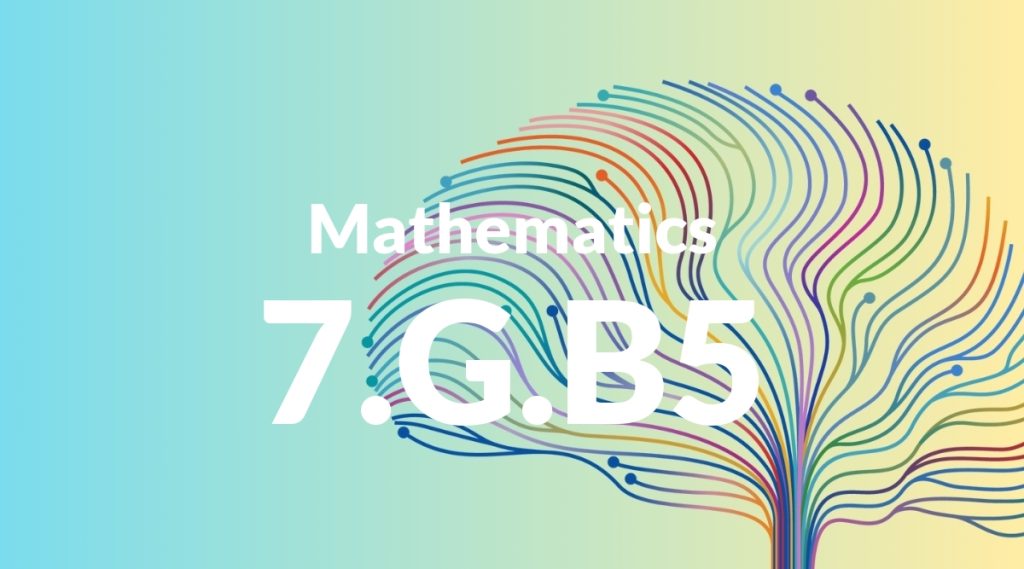Standard: 7.G.B5 – Use facts about supplementary, complementary, vertical, and adjacent angles in a multi-step problem to write and solve simple equations for an unknown angle in a figure.
Grade level: Grade 7
Subject: Mathematics
Domain: Geometry
Teacher Overview
This standard focuses on using knowledge of different types of angles to solve multi-step problems involving unknown angles. It is crucial as it builds on students’ understanding of basic geometric principles and introduces them to more complex problem-solving techniques. Students should be familiar with the basic types of angles and how to measure them, as well as have a foundational understanding of simple algebraic equations.
Mastering this standard prepares students to tackle more advanced geometric problems, including those involving polygons and circles, by applying their understanding of angles and equations.
Common Misconception 1
A common misconception is that all angles in a figure must add up to 180 degrees. This is incorrect as the sum of angles depends on the type of figure and the specific angles involved.
Intervention 1
To address this misconception, provide varied examples and practice problems that illustrate the different sums of angles in various figures, emphasizing the correct properties of angles.
Common Misconception 2
Another misconception is that adjacent angles are always supplementary. This is incorrect as adjacent angles can have various relationships depending on the context.
Intervention 2
Use diagrams and interactive tools to show students examples of adjacent angles that are not supplementary, reinforcing the correct definitions and properties of angles.
Prerequisite Knowledge
Students should understand basic angle types (right, acute, obtuse), angle measurement, and simple algebraic equations before tackling this standard.
Subsequent Knowledge
After mastering this standard, students will be able to apply their understanding of angles and equations to more complex geometric problems, including those involving polygons and circles.
Instructional Activities
- Angle scavenger hunt: Students find and measure angles in the classroom.
- Interactive angle puzzles: Use digital tools to solve angle problems.
- Group projects: Create geometric art using specific angle measurements.
- Real-world problem solving: Design a simple structure using angle calculations.
- Angle equation worksheets: Practice solving for unknown angles.




